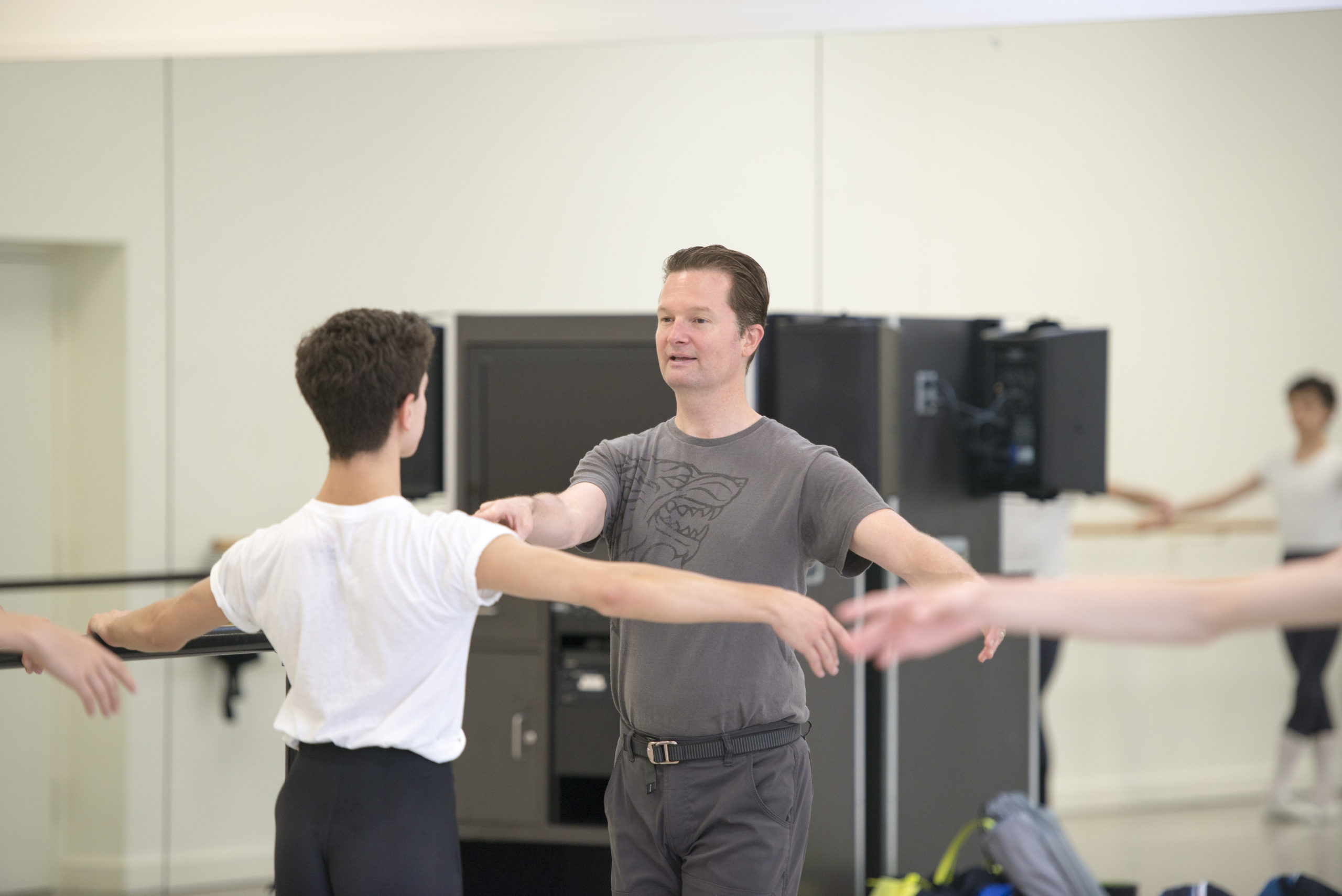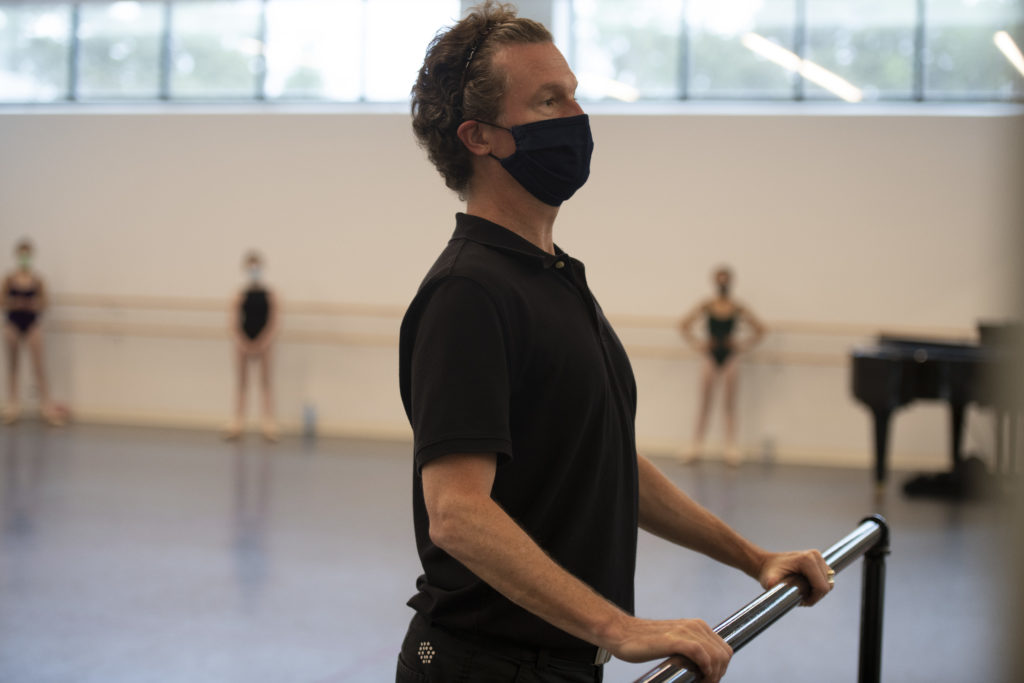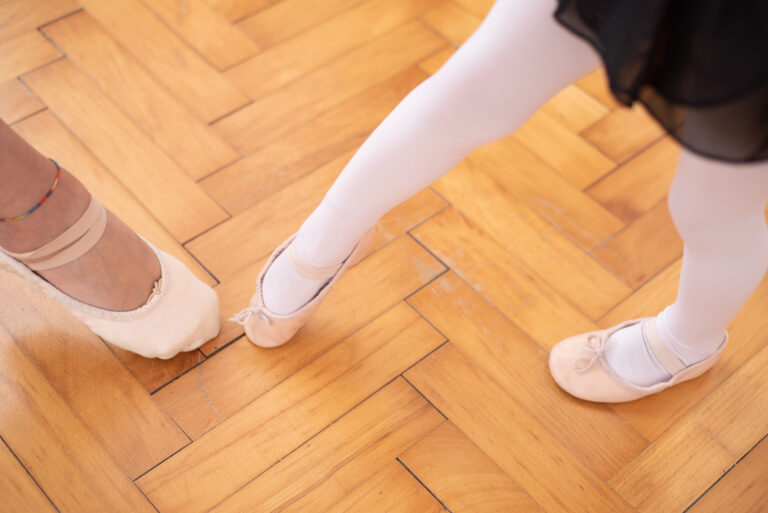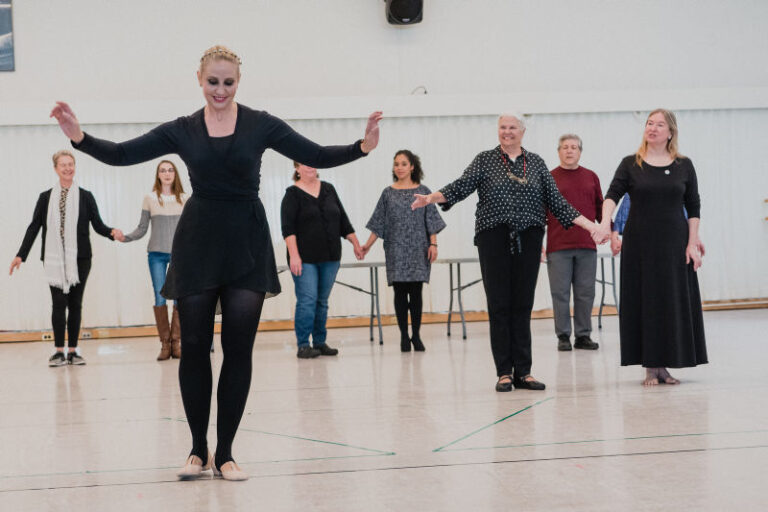
As the associate director of Boston Ballet II, Peter Stark is responsible for preparing dancers for the rigors of company life. And a crucial requirement for professional dancers in any genre is versatility.
“Most dancers today are dancing in the style of the ballets, and not the style of the company,” says Stark, noting that in a given day his students need to be equipped to dance works by August Bournonville, George Balanchine and William Forsythe. For Stark, the secret to succeeding in this environment is coordination. And the key to coordination? A mastery over directional changes.
“When a dancer is coordinated, they have a natural sense of how to use their weight,” says Stark. “When auditioning dancers, we’ll often find that a very coordinated dancer ranks higher than a very technical dancer.” Below, Stark lays out his advice for how to help students achieve that on-a-dime quality that will wow judges, directors and audiences alike.
Start With Standing
When working with a new group of students, Stark begins by focusing simply on standing. Mikko Nissinen, Boston Ballet’s artistic director, advocates for dancers keeping their weight forward on the balls of their feet. This allows for faster movement, and for dancers to anticipate directional changes. Stark borrows the following image from Nissinen: “If you have an x-ray machine on the ceiling looking down at your body, your collarbones should be slightly in front of your hip bones,” he says. “That puts the weight slightly further on your toes. From there, you already start to have a sense of natural movement.”

When it comes to standing at the barre, Stark emphasizes a strong correlation between a dancer’s grip and their stance. “If you can open your fingers and push on the barre, it allows you to roll your inside shoulder back and position your weight more on the ball of your foot,” he says.
The Importance of Turnout
Stark has never forgotten a lesson he learned from his teacher at the School of American Ballet, Suki Schorer. “She said that turnout allows us to move quickly and easily in different directions,” he says. “If you turn out, you can move front but also side to side, which creates greater directional changes and speed.” Stark believes that emphasizing a deep understanding of turnout as stemming from the top of the leg will have a huge impact on a dancer’s ability to change direction swiftly, whether they’re following a classical or a contemporary path.
Just Keep Breathing
When working with dancers on smoothing out directional changes, Stark often finds himself reminding them to breathe. “Dancers tend to hold their breath, which can create a blockage of movement,” he says. “The other thing I look for is where they’re holding tension.” Stark adds that this is often in unusual places, like the jaw, lips, hands or neck. Rather than asking them to let that tension go—a request that Stark knows is nearly impossible—he works with them to mentally transfer the tension to places where they’d want it, like the lower stomach and inner thighs. “That allows the rest of your body to relax,” he adds. A longtime practitioner of the Gyrotonic Method, Stark also believes that incorporating Gyrotonic or yoga exercises into class can also make a huge difference when it comes to breath.

Anticipate Weight Shifts
In general, teaching dancers to stand with their weight forward prepares them for whatever type of movement is thrown at them. But Stark believes that true coordination stems from knowing where your weight has to be in each individual step. He gives his students a number of center and jumping combinations to help work on this skill set. Immediately after barre, he starts with a simple temps lié combination that he learned from his teacher Stanley Williams. “It’s six temps liés forward and back to an adagio tempo. It’s such a great way to feel your weight in the center without the barre,” says Stark. This simple transfer of weight can prime students for more complex directional changes later on.
When it comes to petit and grand allégro, Stark has dancers feel the power of their weight in movement by doing two soubresauts before a tombé pas de bourrée. The first is straight up and down, and the second leans in the direction the dancer is heading. “This gives the audience a greater sense of coordination because it looks and feels more natural than wrenching your body in a direction without anticipating the weight shift,” he says.
But while most grand allégro exercises require a continuation of momentum, Stark reminds dancers that some steps benefit from shifting the weight to the supporting side. For example, in a grand jeté, dancers should hold their weight back so they can have an up-and-over sensation. “You want to really spend time with the dancer, so they understand when they’re putting their bodies forward into a jump versus on their standing leg,” says Stark. “It’s very advanced and nuanced information.”




